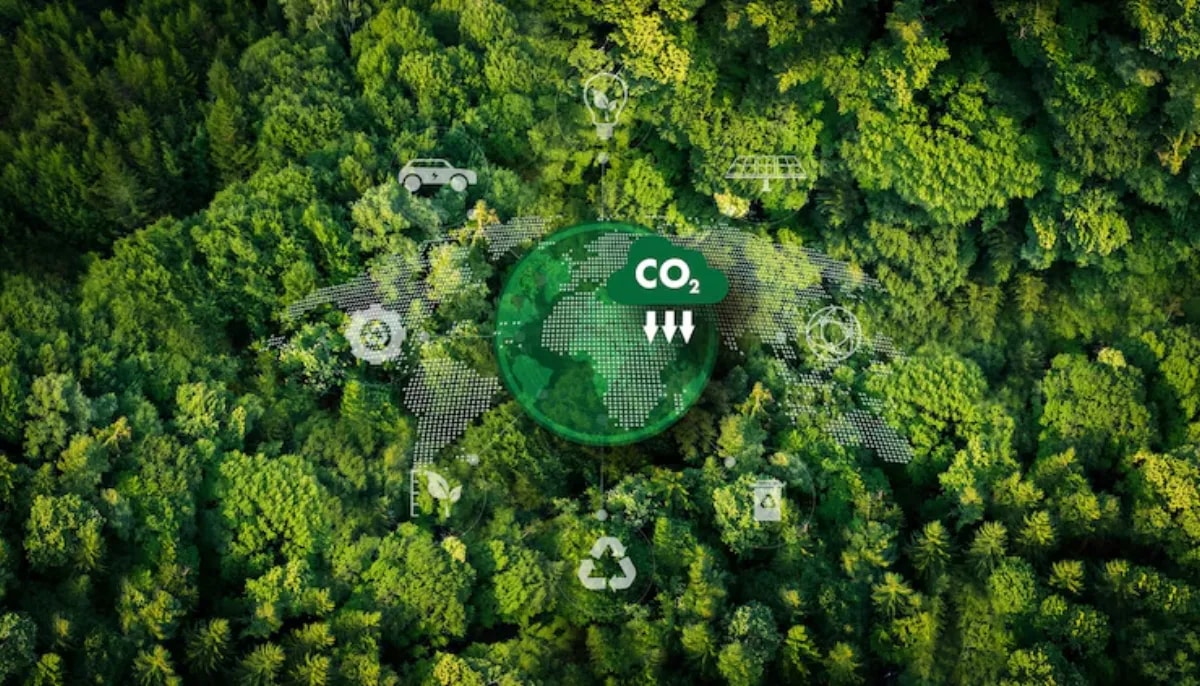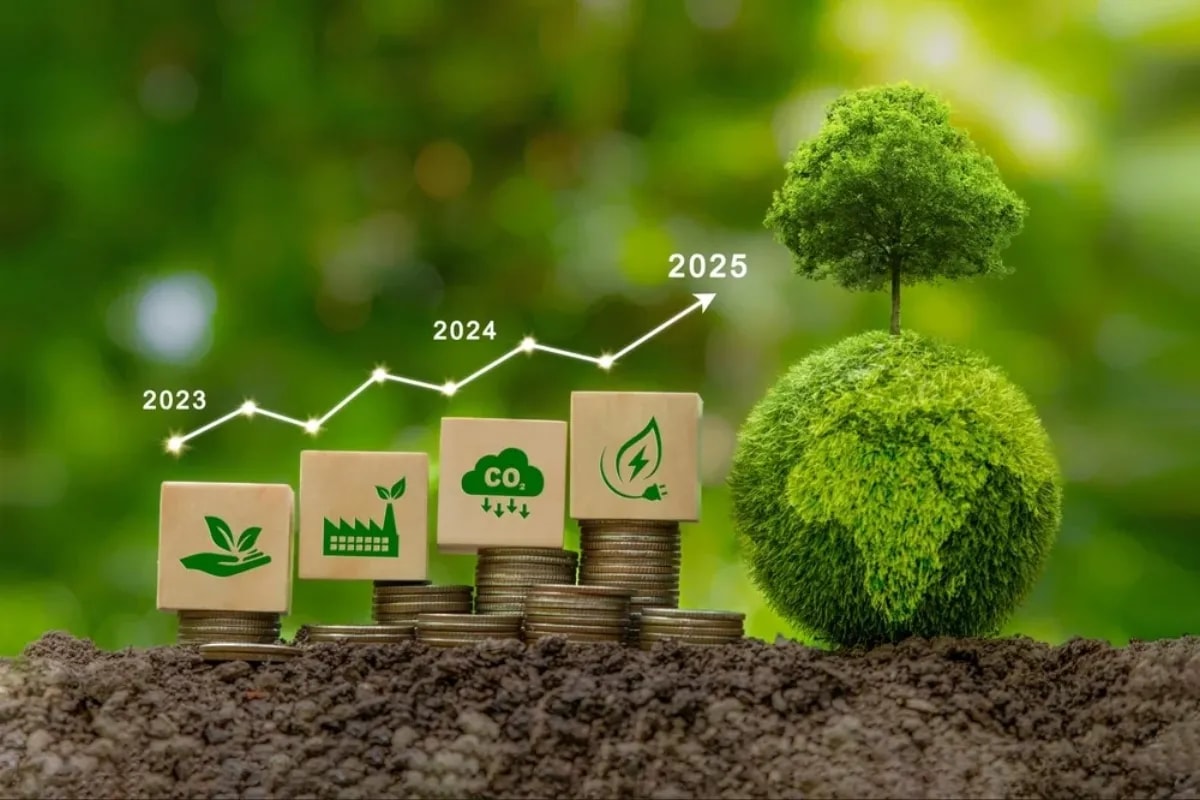Carbon Credits Decoded: The Real Value Behind the Climate Currency

Global warming has evolved from a distant concern into a pressing and undeniable reality, influencing both our present and future. Its impacts are evident—erratic weather patterns, intensified forest fires, melting glaciers, rising sea levels, ocean acidification, and heightened tidal activity. These symptoms of global warming collectively drive climate change, posing serious risks to ecosystems, food security, and human livelihoods.
To address this global crisis, several international initiatives have been launched, most notably the 2015 Paris Agreement. This landmark accord aims to limit global warming to 1.5°C above pre-industrial levels. Achieving this target requires halving current global emissions by 2030 and reaching net zero by 2050.
But what about the emissions from the activities that can't be replaced by alternative/clean energy or stopped completely?
This is where carbon offsetting becomes crucial—enabling other actors to reduce or capture emissions on behalf of those unable to do so, thereby generating carbon credits. A carbon credit is a unit that represents the removal or avoidance of one tonne of CO₂ from the atmosphere. These credits can be purchased by companies, governments, and individuals to offset their own emissions, creating a balance between emitted and removed carbon. It's estimated that 2 billion tonnes of CO₂ in credit offsets will be needed to meet the 2030 climate targets.

How Do Carbon Credits Work?
Carbon credits operate within cap-and-trade systems or voluntary carbon markets:
- Cap-and-Trade: Governments set a limit (or cap) on total emissions allowed in a sector and set up an emission trading system (ETS) such as the EU ETS, the world's largest carbon market. Companies that emit less than their allowance can sell their excess credits to others exceeding their limits, encouraging overall emissions reduction.
- Voluntary Carbon Market: Organizations and individuals voluntarily buy carbon credits to offset their emissions from voluntary carbon markets such as Verified Carbon Standard (VCS), Puro.earth, etc. These credits come from projects that actively reduce or capture carbon, such as reforestation, regenerative agriculture, renewable energy, or carbon sequestration techniques like biochar production.
What are the types of carbon credits?
They are classified based on the way they are generated.
- Avoidance or Reduction Credits: Generated from projects that prevent emissions, such as renewable energy initiatives (solar, wind, and hydro), improved cookstoves, and methane capture from landfills.
- Removal Credits: Created by projects that physically remove or sequester CO₂ from the atmosphere, including afforestation, biochar, regenerative agriculture, and direct air capture (DAC) technologies.
Why does it matter?
Carbon credits present a market-based approach to tackling climate change by incentivizing emission reductions beyond immediate operations. They support:
- Corporate Sustainability: Companies progress towards net zero by compensating for unavoidable emissions.
- Climate Finance: Capital flows into climate-positive projects that restore ecosystems and build climate resilience.
- Biodiversity Co-benefits: Many carbon offset projects also enhance soil health, water retention, and biodiversity.
According to CDR.fyi leaderboard (2025), Microsoft consumes nearly half of all the carbon credits in the world. This is in line with its goal to become carbon-negative by 2030 and remove all carbon caused by its historic emissions since its inception in 1975.

Can carbon credits really help fight climate change or are they just a tool for greenwashing?
- Offsetting, according to critics, is a form of "greenwashing," enabling businesses to avoid reducing their emissions while maintaining the ability to declare that they are or will be carbon neutral.
- Offsetting, according to its proponents, can assist direct funding towards conservation and sustainable development initiatives that lower emissions, allowing businesses more time to strive for zero emissions.
- There are other additional risks like permanence risks eg. forest fires that could reverse the carbon sequestration along with quality and integrity issues.
To address these concerns, rigorous certification standards like Verra (VCS), Gold Standard, and Carbon Standards International ensure carbon credits are verified and contribute to genuine climate impact.
Carbon credits function as both regulatory instruments and market-driven mechanisms to reduce emissions while supporting sustainable development. When implemented with integrity, they can drive climate action, restore ecosystems, and support vulnerable communities.
Beetle Regen Solutions: Advancing Nature-Based Carbon Solutions in India

Beetle Regen Solutions is pioneering efforts in sustainable land-use practices through regenerative agriculture, biochar production and alternate wetting and drying (AWD) methods in rice farming to generate high-quality carbon credits that support emission reductions while benefiting smallholder farmers in India.
How Beetle Regen Generates Carbon Credits?
- Regenerative Agriculture: By promoting sustainable cotton farming, Beetle Regen enhances soil organic carbon, optimizes water use, and reduces dependency on synthetic fertilizers—contributing to both emission reduction and biodiversity gains.
- Biochar Projects: Using the Global Artisan C-Sink method, Beetle Regen converts crop residues into biochar, which locks carbon in the soil for centuries, enriches soil fertility, and prevents GHG emissions from decomposition or burning. The circular model returns biochar to farmers, improving their productivity and generating tradable carbon credits.
- Alternate Wetting & Drying (AWD):Beetle Regen is piloting a water management technique for rice cultivation that involves alternating periods of wet and dry soil conditions instead of continuous flooding. It aims to conserve water and reduce greenhouse gas (like Methane) emissions.
How does Beetle Regen Enable Carbon In/Offset for Businesses?
Carbon Insetting:
Beetle Regen facilitates carbon insetting for apparel brands by providing regenerative cotton from its projects and supporting the same farmers in producing and applying biochar—thereby generating Carbon Dioxide Removal (CDR) credits to offset their emissions internally. This cotton is cultivated using regenerative agricultural practices that reduce chemical inputs, optimize water use, and enhance biodiversity. The carbon sequestered through these practices, along with biochar application, contributes to the generation of high-quality carbon credits under voluntary carbon market mechanisms. Farmers benefit from additional income, improved soil organic carbon (SOC) levels leading to better yields, and more resilient livelihoods. Brands can claim these insets within their own supply chains, demonstrating authentic progress toward their net-zero targets.
Carbon Offsetting:
Companies working towards Net Zero commitments can also partner with Beetle Regen to purchase verified carbon credits for external offsetting. By investing in nature-based solutions, businesses not only compensate for their emissions but also contribute to rural development, sustainable agriculture, and enhanced climate resilience.
In conclusion, carbon credits offer a bridge to a sustainable future, allowing businesses and individuals to take responsibility for their emissions. However, they must be used in conjunction with direct emission reductions. By supporting such initiatives, companies mitigate their carbon footprint and contribute to a climate-positive, regenerative future for all.